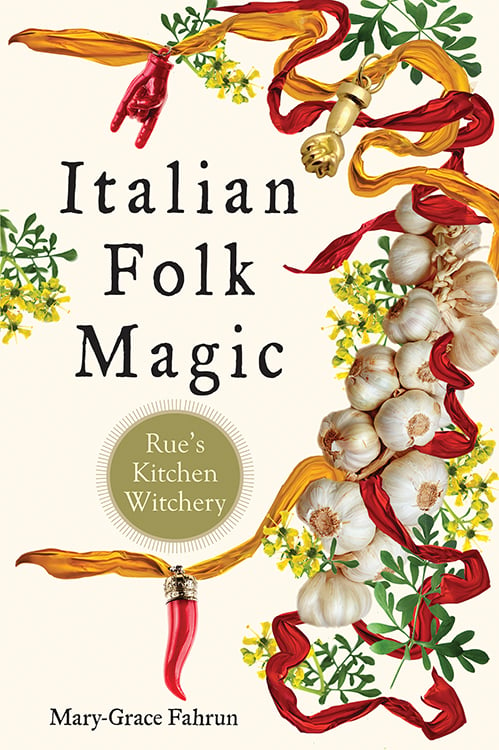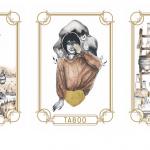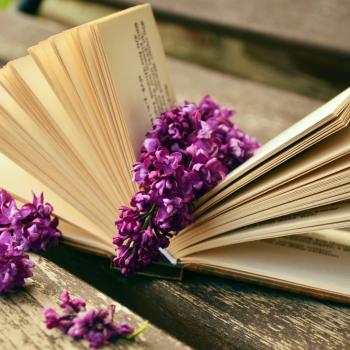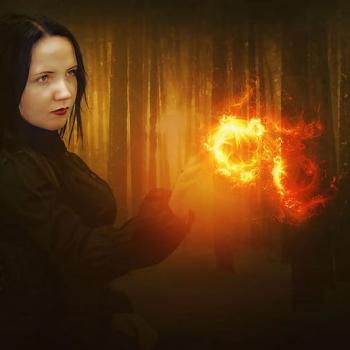First, I need to make one thing perfectly clear: never in a million years would anyone present that night ever describe their practice as stregoneria (witchcraft). Nor would any respectable member of my family or community ever self-identify as a strega (witch). Never. Occasionally, taken off-guard, they may have implied it. However, if asked about it later, they would categorically deny it. At the very most, they would perhaps admit to being superstitious. In all my learning, and for lack of a better word, apprenticeship, under the matriarchs of my family and community, even if someone in our community was a known maga or mago (practitioners of magic), no one would ever utter their name when speaking about them. Very much like in those famous books about the boy wizard where no one speaks the name of his mortal enemy.
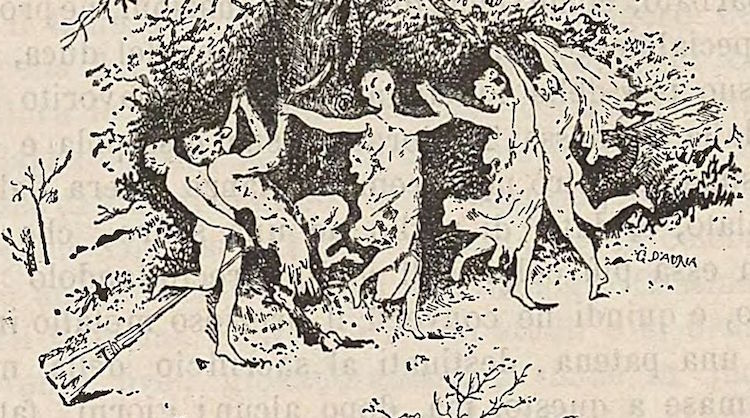
When I speak of my learning and apprenticeship, it isn’t what you imagine. I didn’t attend daily witch lessons. I was raised very much like an orphan—by a community made up of Italian and Italian immigrant relatives, friends, and neighbors. I grew up in a time and in a family where all importance was placed on raising girls to be good housewives. Being a good housewife meant learning every skill required to maintain and run a household and a family. Good housewives, or femmine di casa (in Italian dialect), were responsible for maintaining all the practices, customs, and traditions of our family and village of origin. All this while often working forty hours per week in a factory or sweat shop.
From a very young age, I fell in line. I learned to cook, sew, embroider, garden, do laundry, etc. It was common in my neighborhood for young girls as young as eight years old to rush home after school to clean and get supper started before their mothers arrived home from work. We were told that this was all to make us good wives.
I never really felt aligned with the Italian dream of getting married and having children. Certainly not when I was still a child myself. At the age of sixteen, I began to rebel against what I described as the “patriarchal indoctrination and subjugation of women.”
That summer I landed my first paying job and learned to drive. I had no intention of being anyone’s housewife ever. Heck, I didn’t even want to be Italian anymore because being Italian meant having to give up my dreams and be confined in what I felt was an archaic social construct. I was born in America, and therefore, I was born free! Two years later when I turned eighteen, I struck out on my own, putting all that useless domestic training behind me. Why not? I was never going to use any of it anyway.
Or so I thought.
You see, I thought all I was being taught was to cook and clean when, in fact, the education I received was so much more profound than home economics. I thought I was walking away from all this in the summer of 1986. Instead, I was heading down a path that would take me to what would become my life’s work of love.
What I learned at the feet of the great matriarchs of my family and community was the Italian language and a number of diverse dialects. Each one of them spoke the dialect of their home town in Italy. I learned about where my people came from and who they were—and by extension where I came from. I learned about our history, customs, and tradition.
I learned that our tradition is very rich, and that it contains magical and religious rituals and prayers for the outward expression of our inner spirituality for every phase and condition of our lives. The practices of witchcraft, folk medicine, blessing rituals, cooking, and crafting are inextricably woven into the fabric of Italian culture—no matter where Italians are geographically located. Together, these components make up a beautiful tapestry unique to each practitioner. Together, these components are vastly greater, and more intangible, than the sum of their parts; thus, from both the practical and cultural standpoint, any effort to divorce one from the other diminishes the tradition as a whole.
Like I said, I didn’t attend witch lessons, and the witchcraft is inextricably woven into the fabric. . . . You get the gist. There’s a Zen proverb: “After enlightenment, the laundry.” I’m not Zen, I’m Italian, so I was thinking of doing it this way: “After the laundry, enlightenment.” Meaning, I want to share with you my personal knowledge and experience of all the above-mentioned components of Italian witchcraft. My hope is you then take these components, do your own research, and craft a tapestry of practice that is uniquely you.
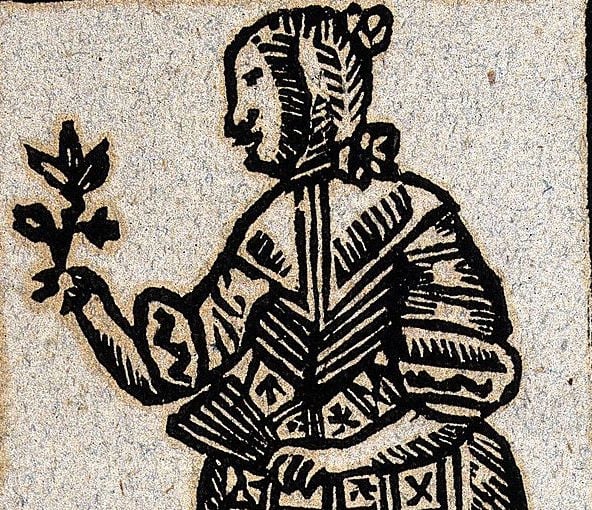
Language and Place of Origin
I am fluent in Italian, including five or six regional dialects. My mother was from northern Italy, my father from central Italy. I grew up in a family and a neighborhood made up of mainly central and southern Italian immigrants. We spoke Italian dialects at home, in the schoolyard, and at the supermarket. I attended Saturday morning Italian school and attended Italian Roman Catholic Mass almost every Sunday. Okay, maybe not. We attended Mass mainly on holidays and sacraments. Okay, we didn’t attend Mass regularly.
I digress.
My family always talked about the region of Italy they came from and their hometown. Always. I grew up listening to the same stories over and over again. Now that my parents are gone, I have memories of their lives growing up that are almost more vivid than my own!
The reason I bring up language is that I was taught everything in Italian. The dialect varied from zia to nonna, but the message was always clear. Not because I was fluent, but because I was interested, and when I wasn’t interested, because of repetition.
If you don’t already know about your family’s region of Italy and their hometown, research it. Learn the history of the town, who the patron saint is, and any legends associated with it and the local cuisine and specialties. Cook something your nonna made you when you were little. Cook something your parents talked about enjoying when they were little. Talk to your family members and relatives. Connect with people whose ancestors hail from the same region and, if possible, town as yours did. My most favorite computer application in the entire world is the one where I can type in a location and view satellite and street-level images. I call it “visiting.” I visited our paese in Italy in person when I was younger. Now I visit it using the aforementioned computer application. Seriously, it never ceases to fill me with awe.
What if you don’t speak Italian? What? You don’t speak Italian? What is wrong with you?! Just kidding. By the end of this book, I guarantee you will have a new appreciation for the language, and you may even pick up a few hundred words. I also highly recommend learning the language. We live in such an exciting time when we can learn a language for free from the comfort of our own home computer or phone app. You are of Italian ancestry with the genetic information of all those who came before you in your DNA. I assure you: it’s in you. Learn the language so you can appreciate the wordplay in everyday things we take for granted, like why your favorite maccheroni (pasta) is called penne (or quills, because they look like quills) or spaghetti (little strings, because they look like pieces of string). Learn the language to pronounce it espresso, not expresso; and bruschetta [broo-sket’tah], not [brooshettah]; and to be honest, gabagool is not even a word. It is pronounced capicollo….Learn the language so that your heart and mind can connect to your heritage.
What if you are not of Italian ancestry but inexplicably drawn to Italian witchcraft?
Let me answer this question with a little personal anecdote. My eldest daughter lives and breathes Japanese anime. She is not Japanese. She is Canadian of Italian, German, and Romanian ancestry. Her interest in Japanese anime led to her learning anime culture and, by extension, a knowledge of how Japanese language differs from English language as evidenced by some pretty comical examples of translation. She has a decent knowledge of Japanese popular culture, some words, and of course, food and snacks. She surrounds herself with like-minded people who may not be Japanese, but who also live and breathe Japanese anime. They don’t need to be or speak Japanese to be passionate about Japanese anime. See my point?
So what if you are not Italian? Immerse yourself and cultivate your interest in Italian witchcraft, and everything else will follow. Learn how to cook Italian food. If you’re not into cooking, learn how to order Italian food at a restaurant. Learn the history. Learn the language. You don’t need to be fluent. All you need is to be truly interested.
The last point I described in my Japanese anime anecdote is: find your tribe.
The aim is not to practice “authentic” Italian witchcraft. That’s way too much pressure—even for me! That would imply that there is only one way. There is no such thing. Authentic how? There is no way I do things exactly the way my nonna did in the 1930s in her little mountain village in Italy. Nor do I do things exactly the way my nonna’s sister did forty years later in America. I will share with you their practices. I will share with you my practice. A practice influenced and informed by those who came before me and shared their stories, skills, and secrets. The purpose of this book is to provide you with a guided tour of my magical life and introduce you to, and for some of you, reacquaint you with, the principles so you can create your own magical life. The Italian witchcraft I will be presenting is not a religion. It is a practice anyone can incorporate into their spirituality regardless of religious belief. However, there will be strong themes of devotions to saints and earth-based spirituality because they are both important to the fabric. In sharing with you these beautiful practices I am so passionate about and how they enrich my life, I hope to infect you with the same passion. May it, in turn, enrich your life, and you will become a member of my tribe.
Adapted and reprinted with permission from Weiser Books, an imprint of Red Wheel/Weiser, Italian Folk Magic by Mary-Grace Fahrun is available wherever books and ebooks are sold or directly from the publisher at www.redwheelweiser.com or 800-423-7087.



